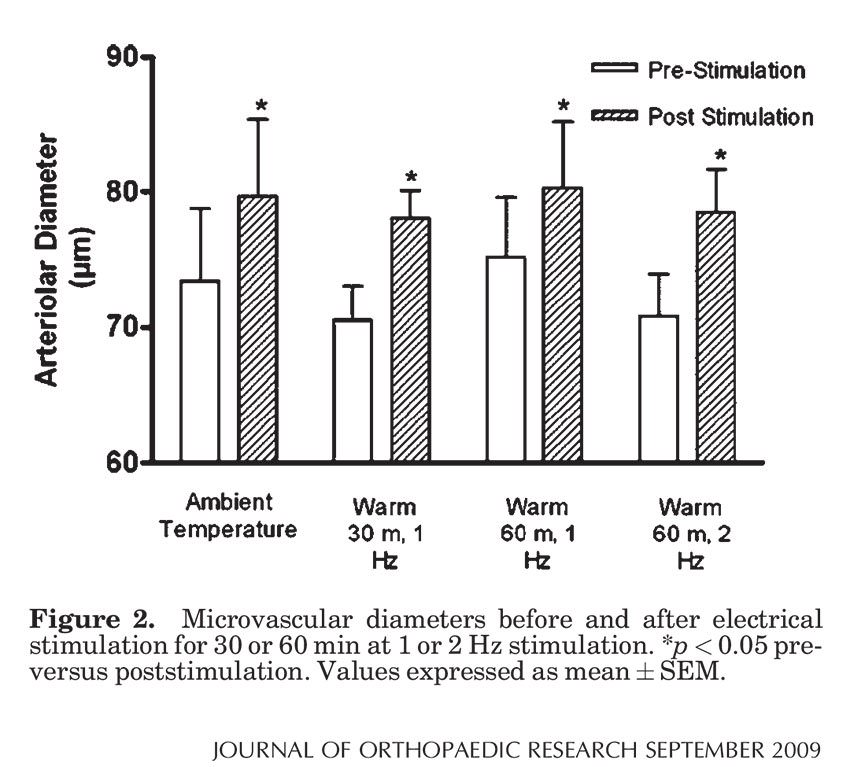H-Wave Research Supports Nitric‑Oxide Role In Vasodilation
H-Wave Induced Vasodilation May Help Expedite Recovery From Soft Tissue Injuries
The Journal of Orthopedic Research published the abstract last year of a paper on the mechanisms of the H‑Wave device. Lead researcher Thomas L. Smith, PhD and his team from Wake Forest University Department of Orthopedic Surgery had a paper accepted for publication entitled: H‑Wave induces arteriolar vasodilation in rat striated muscle via nitric oxide mediated mechanisms.
The research recognizes the use of H‑Wave to expedite recovery from soft tissue injuries and aims to learn more about exactly how and why the H‑Wave device is particularly effective.
Smith and his team found that H‑Wave device stimulation (HWDS) resulted in significant arteriolar vasodilation, which is a mechanism involved in the healing process; and noted that nitric oxide plays a role in the microvascular response to HWDS.
Their research suggests that arteriolar vasodilation accompanying HWDS may result in increased perfusion, contributing to the observed therapeutic effects of HWDS. Therefore, H-Wave device stimulation may help speed the recovery process by allowing increased blood flow and waste elimination to and from the injured area, respectively.
